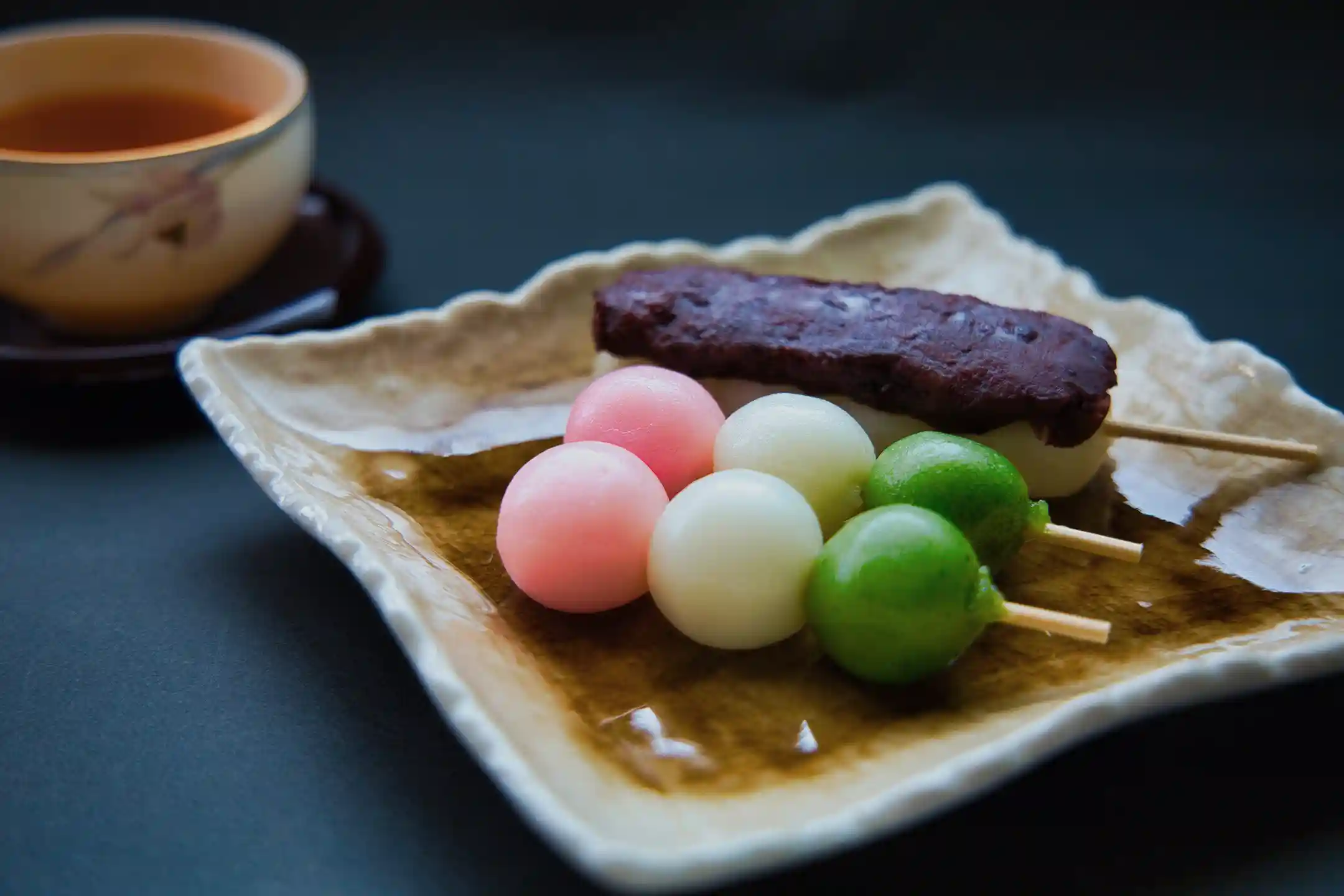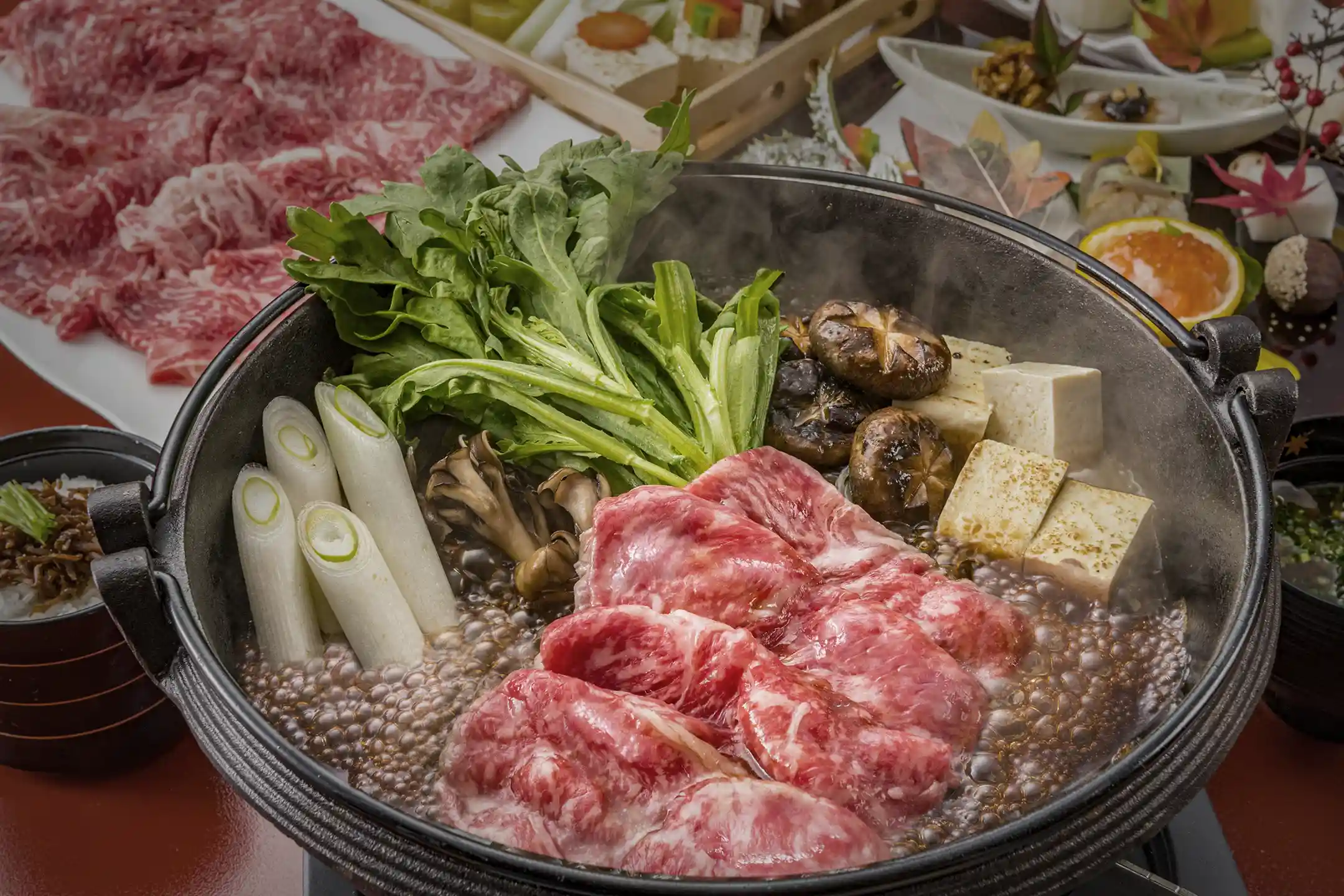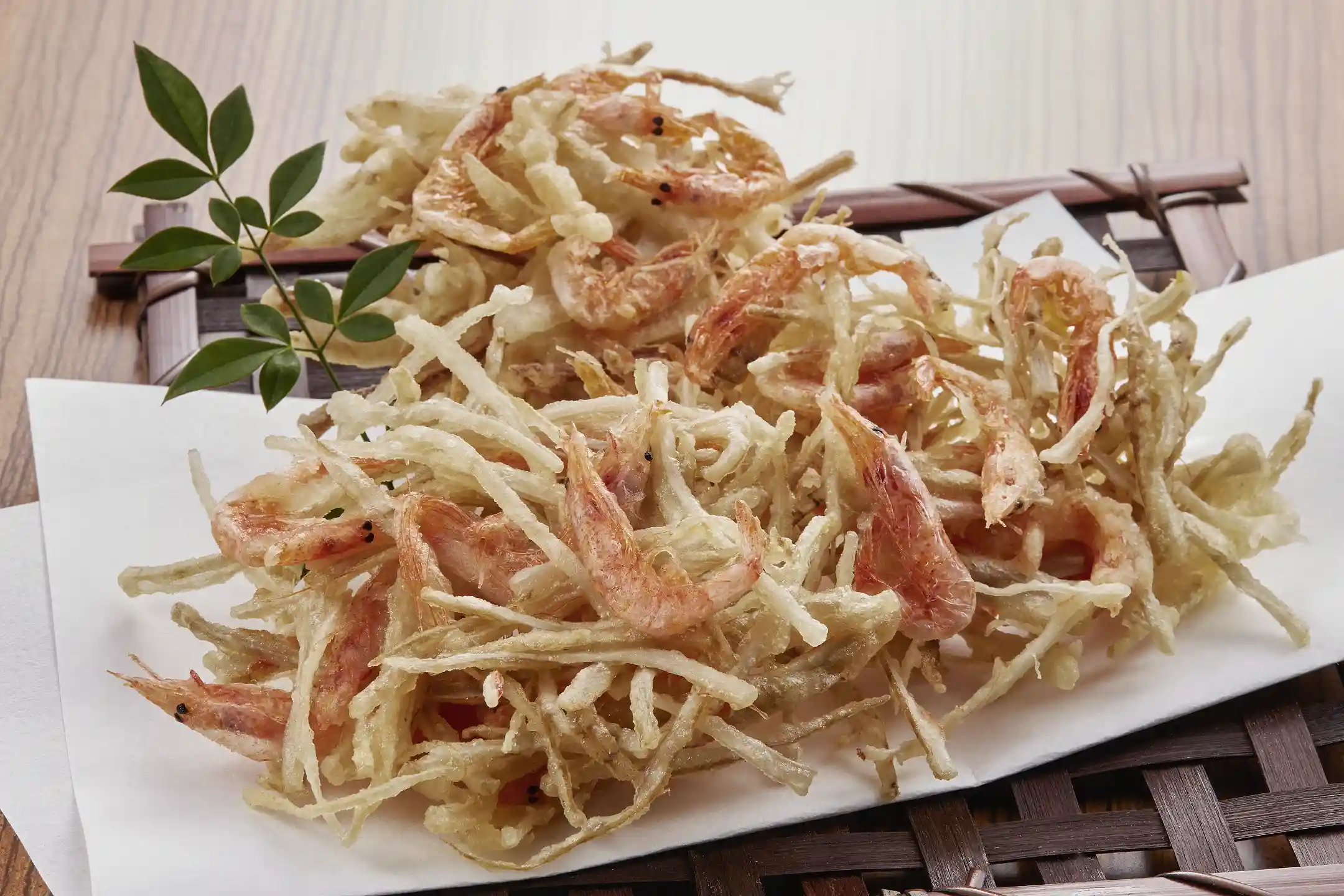When you arrive in Japan, give yourself the pleasure of lingering over Japanese tea (nihon‑cha) and dango—treats that are anything but ordinary drinks and desserts. Yes, coffee and black tea feel comfortingly familiar, yet in Japan tea and dango have long danced with spirituality, craftsmanship, and the visual arts, turning every sip and bite into a small cultural adventure.
The choreographed movements, lacquered utensils, and gentle silences of the tea ceremony might first strike you as almost sacred. Instead of regarding them as inscrutable, pause to learn their history and the shifting seasons expressed in each variety of dango. That little bit of background uncorks a more equal, genuine exchange between you and the culture you’re discovering.
This article invites you into Japan’s café & sweets world—history, art, and regional journeys—through the delicious prism of Japanese tea and dango. Let’s step inside.
The Unique Culture Created by Japanese Tea
History and Aesthetic Depth
Japanese tea culture took root during the Heian period (794–1185) when monks carried tea‑drinking customs home from China. Over centuries, “cha‑yoriai” gatherings blossomed among Zen clergy and samurai as refined salons where exquisite imported teaware was admired(*1).
Later, visionaries like Murata Jukō and Sen no Rikyū championed wabi‑style tea, trading lavish display for quiet inner richness(*2). A chipped rim, an uneven glaze—these “imperfections” reveal wabi‑sabi beauty that still inspires modern Japanese design.
Rikyū distilled this spirit into wa‑kei‑sei‑jaku (harmony, respect, purity, tranquility), envisioning a world where everyone shares tea as equals. The intimate, two‑mat tearoom Tai‑an at Myōkian Temple in Kyoto embodies that ideal(*3).
If you come from a culture that prizes flawless surfaces, the welcome emphasis on humility may feel wonderfully refreshing.

Where to Experience the Way of Tea
Nothing decodes tea culture better than hands‑on practice. Long‑established iemoto (family schools) in Kyoto open lessons and demonstrations in English(*4). As you settle into seiza, whisk vivid green matcha, and absorb the hush, you’ll sense how the ceremony teaches equality through movement rather than lecture.
Zen temples in Kamakura serve matcha overlooking dry‑rock gardens, while Tokyo’s “Tokyo Grand Tea Ceremony” sets up outdoor tea tents—imagine a sophisticated picnic under maple trees.
Museums now pair antique teaware with cutting‑edge art installations, proving that the real value of tea lies in how you relish it today.
%20position.webp?width=750&height=500&name=The%20etiquette%20of%20the%20tea%20ceremony%20involves%20welcoming%20guests%20while%20sitting%20in%20the%20seiza%20(formal%20kneeling)%20position.webp)
Journeys for the Finest Japanese Tea
Signature Regions and Recommended Tea Gardens
Think of terroir shaping Japanese tea the way it shapes wine or cheese in Europe.
- Shizuoka basks in sunshine and volcanic soil, producing deep‑steamed sencha with full‑bodied sweetness(*1).
- Uji, Kyoto, birthplace of gyokuro and matcha, balances fragrance and umami with a meticulous artistry any wine‑lover will recognize.
- Southern Kyushu—Kagoshima and Yame—thrives on warm breezes, nurturing diverse cultivars. Farm tours and hands‑on processing sessions let you taste stories hidden in every tender leaf(*2).
%20and%20wagashi%20(traditional%20Japanese%20sweets).webp?width=750&height=500&name=Gyokuro%20(high-grade%20Japanese%20green%20tea)%20and%20wagashi%20(traditional%20Japanese%20sweets).webp)
Urban Cafés Serving Bliss in a Cup
Great tea is never far away. In Tokyo’s Aoyama and Ginza, sleek specialty cafés offer flight tastings of sencha and matcha, guiding you in English through water temperature and pour technique(*3). Their attentive yet relaxed service embodies the Japanese idea of omotenashi—whole‑hearted hospitality.
In Kyoto’s Gion, a renovated machiya townhouse café merges Edo‑period beams with modern art, plating matcha parfaits beside ikebana and artisan ceramics so you feel like the star of a living gallery(*4). Curious? Join a tea‑and‑wagashi pairing workshop before strolling the lantern‑lit streets.
Varieties of Japanese Tea and How to Choose Them
Key Types and Flavor Profiles
Gyokuro (玉露) Shade‑grown leaves yield subdued astringency and an umami sweetness that deserves slow, almost wine‑like tasting(*1).
Matcha (抹茶) Stone‑milled to an emerald powder and whisked to froth, matcha’s bold character also elevates pastries and chocolate into “edible art(*2).
Sencha (煎茶) Japan’s daily staple—bright bitterness balanced with gentle body, perfect alongside meals much like a crisp white wine.
Hōjicha (ほうじ茶) Roasted over high flame, it delivers nutty aroma and low caffeine—a soothing amber brew for twilight conversations(*3).
Tips for Brewing at Home
- Mind the Temperature. Brew gyokuro at 50–60 °C to coax out umami. Use a yuzamashi, an extra vessel that cools your water within seconds.
- Choose the Right Kyūsu. Japanese teapots ensure leaves unfurl evenly; pour every drop so each cup tastes identical.
- Give Leaves a Second Life. Re‑infuse for new nuances, then toss the soft leaves into salads or the garden—zero‑waste hospitality at its best.

The Deep World of Dango and Wagashi
Combining tea with wagashi is essential, and dango shines at the center. Seemingly simple rice‑flour spheres reveal layers of regional history and craftsmanship.
Regional Variations
Dango dates to Heian‑period chronicles and once honored deities when presented at shrines. Kyoto’s Shimogamo Shrine claims that its mitarashi dango mirrors bubbles in the nearby pond(*1). The spread of sugar during the Edo era popularized sweet glazes and filled dango became the treat of choice on leisure outings(*2).
- Mitarashi Dango Grilled then swathed in a sweet‑savory soy glaze—chewy, charred, and utterly satisfying.
- Kusa Dango Yomogi (mugwort) in the dough perfumes spring; bean paste lends a soft sweetness.
- Anko Dango Velvety red‑bean paste blankets tender rice balls; festival stalls often sell playful multi‑colored skewers.
- Local Signatures Okayama’s kibi dango or Niigata’s sasa dango wrapped in bamboo leaves embody local ingredients, seasonal pride, and eco‑friendly packaging(*3).
Modern Cafés Where Dango Meets Art
Cafés now treat dango as an edible canvas. Cafe De Dango near Tokyo’s Takahata‑Fudō tempts you with 50‑plus variations—rum‑raisin, yuzu chocolate, fresh berries—that look as vibrant as Parisian pâtisserie(*4). In Omotesandō, the nostalgic kominka Mican CLUB serves photogenic platings in a serene Japanese setting, winning hearts (and social feeds)(*5).
Collaborations with local artists extend to sustainable tableware, reviving traditional leaf wrappers that pre‑date plastic and underscore Japan’s age‑old respect for nature.
Pairing Guide: Enjoying Japanese Tea and Dango Together
Just as wine and cheese elevate one another, a thoughtful tea‑and‑dango pairing lifts both to new heights.
- Matcha × Mitarashi Dango Matcha’s bitterness pinpoints the sweet‑savory glaze, leaving your palate sparkling clean.
- Hōjicha × Kusa Dango Toasty aromas entwine with herbal yomogi, layering Japanese countryside fragrances in every bite.
- Balance Sweetness and Astringency Sweeter dango begs for brisk sencha; milder sweets glow beside luxurious gyokuro. With red‑bean dango, alternate small sips of concentrated tea and taste the sweetness recede elegantly.
- Seasonal Limited Editions Plan your trip for cherry‑blossom dango with spring shincha or chestnut‑filled dango with autumn hōjicha—fleeting pairings you’ll reminisce about long after flying home.
%20and%20green%20tea.webp?width=750&height=500&name=Matcha%20cream%20anmitsu%20(a%20traditional%20Japanese%20parfait-like%20dessert)%20and%20green%20tea.webp)
Finding Pairing Venues
- Smart Search Terms Combine “Japanese tea café” with your destination when browsing maps or guides.
- Workshops & Events Look for tea‑brewing or dango‑making classes; many include rare teas and seasonal menus.
- Local Collaborations Check municipal tourism sites for partnerships between tea growers and wagashi artisans before you travel(*1).
Enhancing Your Japanese Café Experience
Beyond flavors, Japanese cafés curate atmosphere with the precision of a design studio.
Interiors and Amenities that Elevate the Mood
- Wa‑Modern or Minimalist Design Shoji screens, tatami, glass, and raw concrete play with shadow; the result is a calm you can almost breathe in.
- Quality Furnishings and Art Warm wooden chairs, softly glowing washi lamps, and wall art rooted in local stories make each space a micro‑museum.
- Dress Code—Effortlessly Smart No tux or ball gown required. A neat blazer or stylish dress aligns perfectly with Japan’s understated sense of propriety.
Learning Through Café‑Hopping
- Cultural Classes and Workshops From whisking matcha to sculpting wagashi, these sessions explain why you remove shoes or kneel side‑by‑side.
- Stories Embedded in Tea and Sweets Notice how the same dango shifts subtly between towns; each variation echoes regional terroir and seasonal mindset.
- Dialogue with Experts and Artists Pop‑up exhibits and meet‑the‑maker events close the distance between you and Japanese artisans.
Conclusion
Japanese tea and dango distill centuries‑old aesthetics, gratitude for nature, and a spirit of shared experience. The tea ceremony whispers egalitarian grace; dango bursts with seasonal color and regional pride. Meanwhile, contemporary cafés blend design, art, and sustainability, offering a fresh face of tradition.
Travel across regions and seasons, tune your senses to subtle differences, and your journey will become a tapestry of flavors, textures, and moments—memorably steeped in the artistry of Japan.
Author Bio

Natsumi Ikeshita
Experienced in B2B SaaS marketing and “omotenashi,” Natsumi directs media operations with a focus on hospitality and cultural storytelling. Her global experience and marketing skills bring fresh value to Bespoke Discovery’s content.





/Kazunoko%20Matsumae-zuke%20(Herring%20Roe%20and%20Seafood%20Pickles).webp)